Liverwurst is a traditional meat-based sausage that is otherwise known as ‘liver sausage.’
However, meat is not the only ingredient, and this German sausage contains a variety of ingredients.
In this article, we will provide a guide to precisely what liverwurst is.
Additionally, we’ll look at how to eat it, and the potential nutritional benefits (and drawbacks) it offers.
What Is Liverwurst?
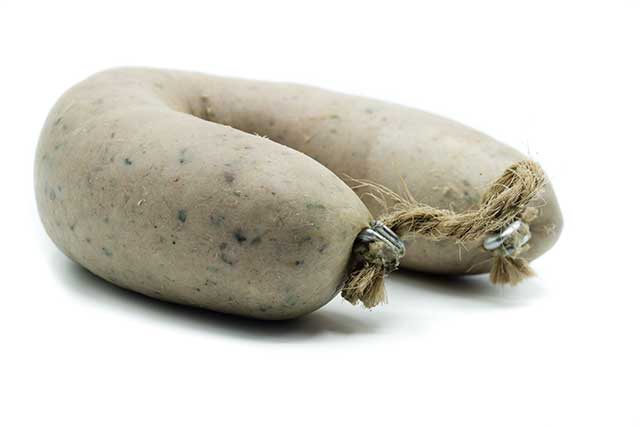
Liverwurst is a seasoned and spreadable meat-based product that comes in the shape of a sausage.
Originating in Germany, liverwurst is particularly famous across Europe, and it is widely available throughout the world.
Liverwurst typically comes in two main varieties; one has a firmer (but very soft) texture, and it is sliceable.
The other form of liverwurst is spreadable, and it looks somewhat similar to pâté. You can use it like you would use any other spread.
What Is In Liverwurst?
Liverwurst is made of three primary ingredients; meat, organ meat, and fat.
These ingredients are usually from either beef or pork.
Generally speaking, the primary organ meat is liver (hence the product’s name). However, liverwurst may include other organ meats such as heart or kidney.
(See here for a full guide to the nutrition benefits of each organ meat.)
Additionally, there are several seasonings used in liverwurst, and these can vary depending on the specific recipe.
Most liverwurst contains salt, black pepper, and onion powder, but you may also find any of the following ingredients;
- Allspice
- Coriander
- Marjoram
- Mustard seed
- Nutmeg
- Thyme
- White pepper
How Is It Made?
The production of liverwurst is very straightforward, and it merely involves grinding and mixing various proportions of meat, organ meat, fat, and seasonings and putting them into a sausage casing.
As previously mentioned, the exact ingredients (and quantities) in each liverwurst sausage will depend on the specific recipe.
Is Liverwurst Good For You?
Since liverwurst contains organ meats—primarily liver—it is very nutrient-dense.
In the next section, we will look at some of the nutritional benefits of liverwurst.
1) An Excellent Source of Complete Protein
Liverwurst contains almost 15 grams of protein per 100 g (1).
Furthermore, since the source of the protein is muscle and organ meats, liverwurst offers a ‘complete’ source of protein.
Complete proteins are found in foods that supply sufficient concentrations of the nine essential amino acids (2).
However, since liverwurst also contains added fat and numerous seasonings, it does not offer the same protein content as meat in general.
However, it is still fairly protein-rich in addition to all its other benefits.
2) Extremely High In Vitamin B12 (and Other B Vitamins)
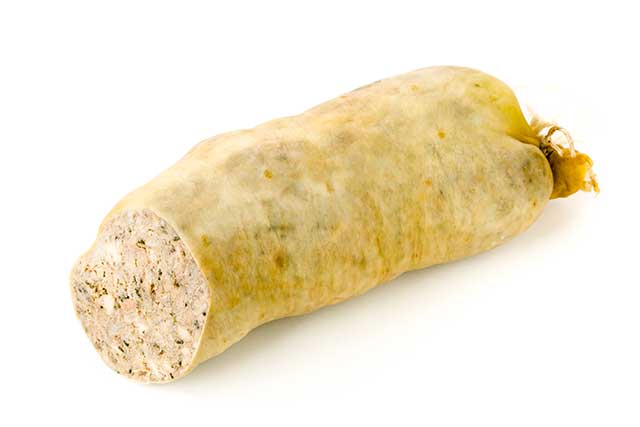
Liverwurst provides an exceptional source of vitamin B12, with 100 grams supplying 837% of the daily value (1).
Vitamin B12 is an essential mineral that we need to obtain from our diet. Among its many functions, vitamin B12 plays a contributory role to red blood cell and DNA formation, and it helps us to maintain a healthy nervous system (3).
The best sources of B12 are organ meats and shellfish, and as liverwurst contains the former, it supplies a significant amount.
In addition to B12, liverwurst provides the full range of B vitamins, and it offers particularly high concentrations of B2 (riboflavin) and B5 (pantothenic acid).
3) A Significant Source of Retinol (Vitamin A)
Retinol is the pre-formed form of vitamin A, which our body can use in its natural state.
In comparison, carotenoids (found in plant foods like carrots and sweet potatoes) need converting to retinol inside the body. For this reason, carotenoids are otherwise known as ‘provitamin A.’
The human body’s ability to convert carotenoids to retinol is poor, and the bioavailability rate of carotenoids can be somewhat low in individuals with certain genetic variations (4, 5).
That said, due to the absolute abundance of carotenoids in some plant foods, they can still be a great source of vitamin A.
However, foods containing retinol are an important (and reliable) source of vitamin A.
Since liver has one of the highest concentrations of retinol, liverwurst also offers a substantial supply. Per 100 grams, liverwurst contains 469% of the daily value for vitamin A (1).
Vitamin A has numerous benefits for human health, and it is particularly important for eye health and maintaining a healthy immune system (6).
4) Loaded With Iron and Selenium
Two more of the major nutrients in liverwurst are iron and selenium, both of which are essential minerals.
Liverwurst contains 62% of the daily value for iron and 105% for selenium per 100 grams (1).
Unfortunately, iron is one of the leading (and quickest growing) nutrient deficiencies, causing an estimated 1.62 billion cases of anemia around the world (7).
Iron is essential for the proper transportation of oxygen around the body, and it also plays a role in general growth and development (8).
The other primary mineral in liverwurst, selenium, has antioxidant properties and it helps to strengthen the immune system (9).
While iron and selenium are the most concentrated minerals, liverwurst supplies every essential mineral in small to moderate amounts.
5) Liverwurst Is a Tasty Way To Include Organ Meats In the Diet
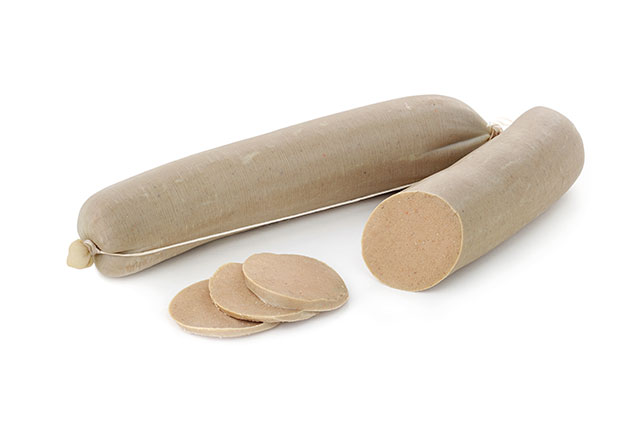
Perhaps one of the most important benefits of liverwurst is the fact it allows us to eat “disguised” organ meat.
The reason for this?
Although organ meats are some of the most nutritious foods we can eat, they are not very popular, and many people dislike their texture.
On this note, the organ meats contained in liverwurst are ground together with a combination of meat, fat, and various tasty seasonings.
As a result, we can get the nutrition benefits of organ meat without the strong flavor and unusual texture.
Instead, liverwurst offers a soft and creamy texture with a buttery, meaty taste, enhanced by flavorful herbs.
If liverwurst helps people to eat nutrient-dense organ meat who would normally skip it, then that is a potential benefit.
Potential Concerns
Despite the nutritional benefits of liverwurst, there are still a couple of concerns worth knowing.
1) Very High In Sodium
Liverwurst contains large amounts of salt, with 100 grams providing around 42% of the recommended intake for sodium (1).
Depending on the overall diet, this could be an issue, particularly for people who are salt sensitive.
Salt sensitivity is thought to affect roughly 25% of the population, and in such individuals, higher salt intake is likely to more significantly raise blood pressure (10).
2) Cheap Filler Ingredients
The majority of liverwurst products contain meat, liver, fat, and seasonings.
However, there are some further processed products to be aware of that may not follow the traditional recipe.
Such products may include cheap fillers like wheat flour and vegetable oil. Although these products will still offer the same base ingredients and a broad range of nutrients, some people may prefer to stick with the more traditional options.
In this case, check the label carefully to see what the liverwurst product contains.
How To Eat Liverwurst
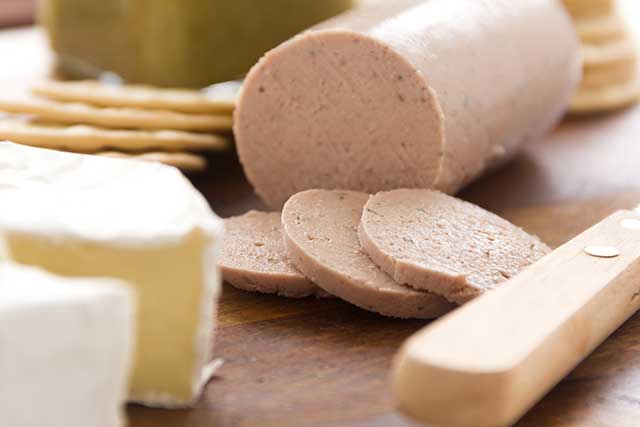
For those who have bought some liverwurst and are now wondering how to eat it, here are a few ideas.
1) Use It As a Spread
You can use liverwurst in the same way you would use cream cheese or any other spread.
Therefore, there are dozens of different things you could do with it, such as;
- Stuffing vegetables
- As a topping for crackers
- Serve and eat alongside meat
2) Add Liverwurst To Soups and Stews
Liverwurst stew is a thing, and you can add the traditional liver sausage to a stew alongside meat, vegetables, and any other ingredients you like.
Adding a few slices of liverwurst to a soup or stew is an easy way to upgrade the nutrient profile, and it helps with the flavor too.
3) Pan-Fried Liverwurst With Onions
Note: you need the sliceable version of liverwurst for this dish.
All you have to do is pan-fry a few slices of the sausage with some onions in a bit of butter.
This meal is quick, simple, and highly nutritious, and it provides a new take on the traditional pan-fried liver and onions.
It is similar, but it tastes much better.
4) With Cucumber and Cheese Slices
Just top some slices of cucumber with a thin slice of liverwurst and cheese.
This combination makes for a nutritious and refreshing snack, and it tastes good too.
5) Make a Liverwurst Dip
Mash some liverwurst with a bit of mayo, and you have a simple-to-make meaty dip that you can use any way you want.
Nutrition Facts
Finally, here is the full nutritional profile for liverwurst per 100 grams.
The source of the data is the USDA’s FoodData Central database, and daily values have been calculated from the FDA’s published daily values (1, 11).
| Name | Amount |
|---|---|
| Calories | 327 kcal |
| Carbohydrate | 3.1 g |
| Fiber | – |
| Sugars | – |
| Fat | 28.5 g |
| Saturated Fat | 9.3 g |
| Monounsaturated Fat | 12.7 g |
| Polyunsaturated Fat | 3.2 g |
| Protein | 14.5 g |
Vitamins
- Vitamin B12: 837% of the daily value
- Vitamin A: 469% DV
- Riboflavin (B2): 117% DV
- Pantothenic Acid (B5): 59% DV
- Niacin (B3): 52% DV
- Choline: 47% DV
- Thiamin (B1): 21% DV
- Vitamin B6: 19% DV
- Folate: 11% DV
Minerals
- Selenium: 105% DV
- Iron: 62% DV
- Sodium: 42% DV
- Copper: 27% DV
- Zinc: 26% DV
- Phosphorus: 13% DV
- Manganese: 7% DV
- Potassium: 4% DV
- Magnesium: 3% DV
- Calcium: 1% DV
Final Thoughts
As shown throughout this article, liverwurst offers a wide variety of nutritional benefits.
This traditional German sausage is high in protein, a rich source of fat-soluble vitamins, and it contains an impressive overall nutrient profile.
Furthermore, it manages to taste good.
As a result, liverwurst is an excellent option for those who don’t like traditional organ meat.
For more on organ meats, see this in-depth guide to sweetbreads.

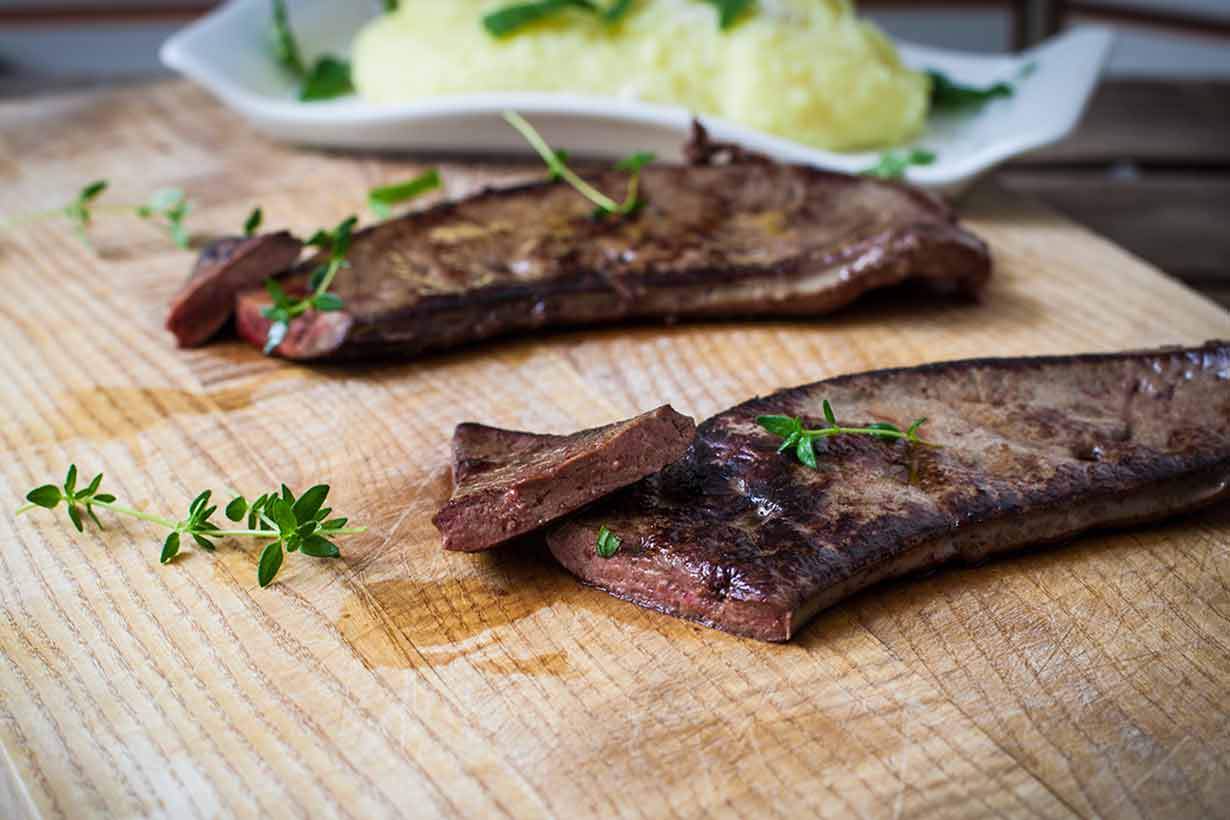
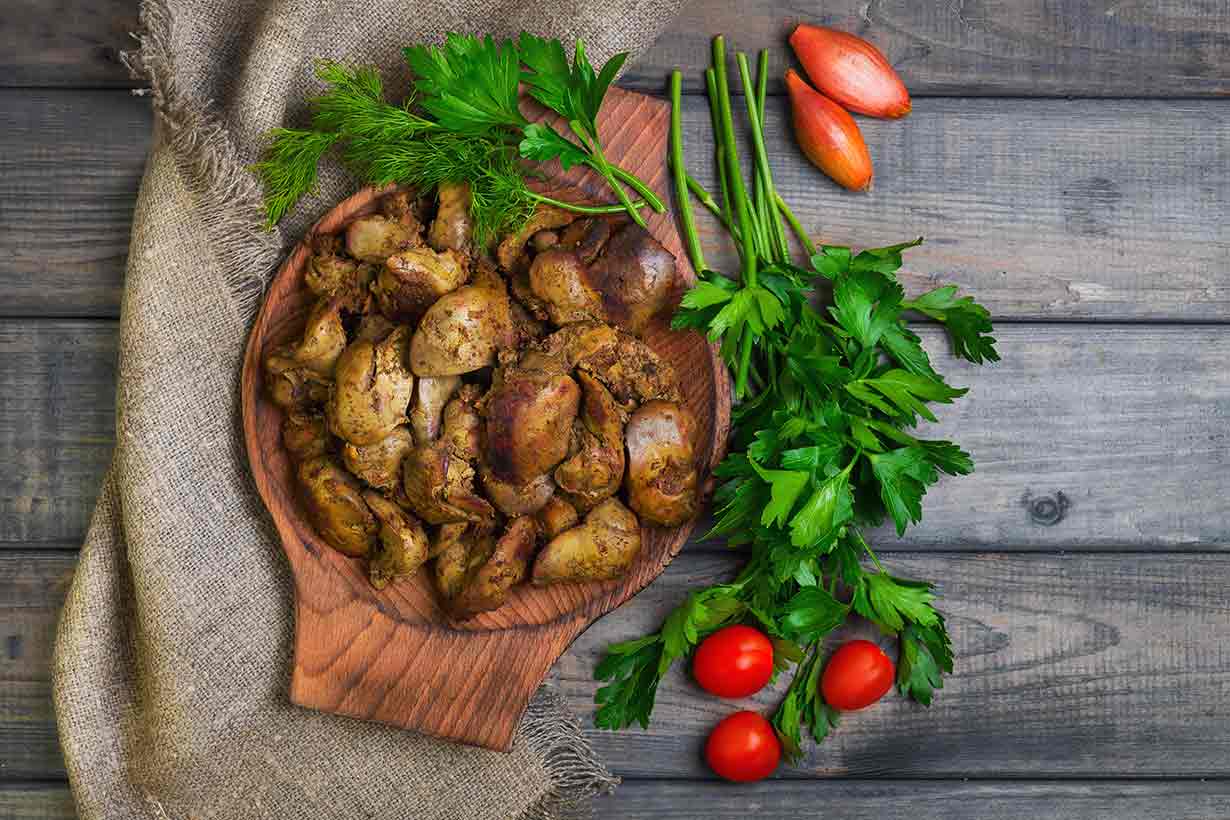
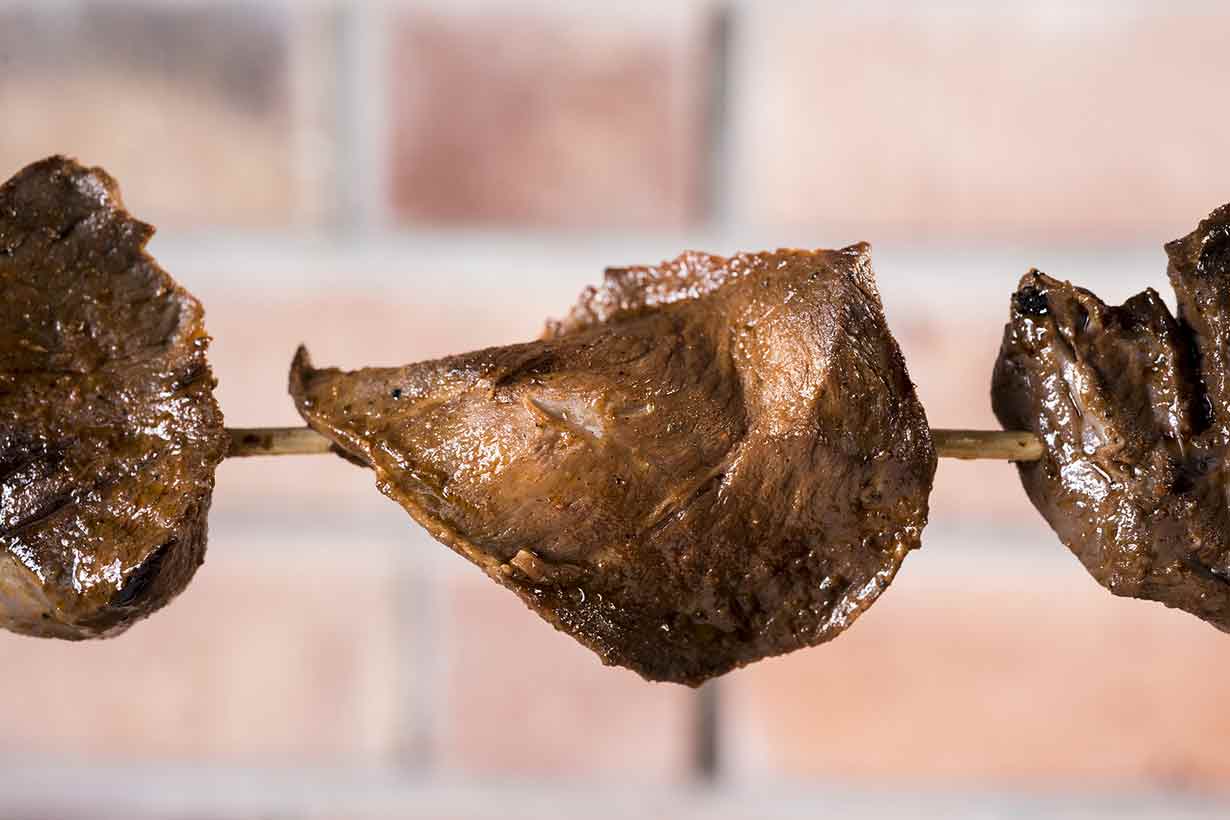


I do not trust deli meat liverwurst. I wish there was somewhere to get it
You may have some success with local food importers. Otherwise, there may be an online source that delivers to your local area?
Try a German deli or specialty store.
Good point – German deli’s should definitely liverwurst (or something very similar).
uswellnessmeats.com has grassfed beef liverwurst…
Excellent advice and a reminder that finding ways to eat liver – this, and chicken liver pate for example – is important for us. New food labels may give ‘leberwurst’ red traffic lights warnings for fat and salt and saturated fat, but that will not put me off… quite the opposite.
Indeed – most of those food traffic light labels are probably worth ignoring. Hard to trust something which gives salmon a low rating because of its fat content, yet calls low-fat crackers healthy.
I have not eaten liverwurst in years. Growing up we always had the slice able kind in our fridge. My family’s favorite way of eating it was a sandwich with a large slice of onion and a little mayo. After reading this article and seeing the many benefits I think I may need to start eating it again.
I think most people would do well if they ate more organ meat. I remember my family and grandparents used to eat it when I was a child too, but nobody really seems to eat it these days.
I give my dogs their pills in liverwurst. They love it!
I don’t know a lot about dog nutrition, but glad they love it!
so is braunswager as good for you? i love both.
I would say so. Liver is the main ingredient in both, so they’re both fairly nutritious.
Thank you for this informative article. I needed this.
Thanks Anne, glad you found it helpful.
Aldi’s braunschweiger is quite delish and fairly inexpensive.
Thanks for the recommendation – will look out for it!
Great read! I have hypothyroidism and they recommend the natural vitamin A in organs meats. Loved the spreadable liver on toast as a kid but always pulled away because of fat and salt levels as an adult. Heading to the store to pick myself up some and relive my childhood.
Liverwurst is definitely a great source of vitamin A. Enjoy!
I like to make a sandwich with mustard and liverwurst on rye . So good
Rye and liverwurst? That sounds like one of the more nutritious sandwich options!
I’ve always liked liverwurst since I was a child. It is very popular and easy to access when I lived in Norway. But since coming to the U.S. it is not as easy to find good liverwurst. I have always loved eating the spread with Jarlsberg cheese on multi-grain or rye crispbread. Delicious! 🙂
Hi Jessica,
Yes, that is often the case when you see the products in big stores. If you have any German delis close to your house, you may be able to find more traditional liverwurst options there?